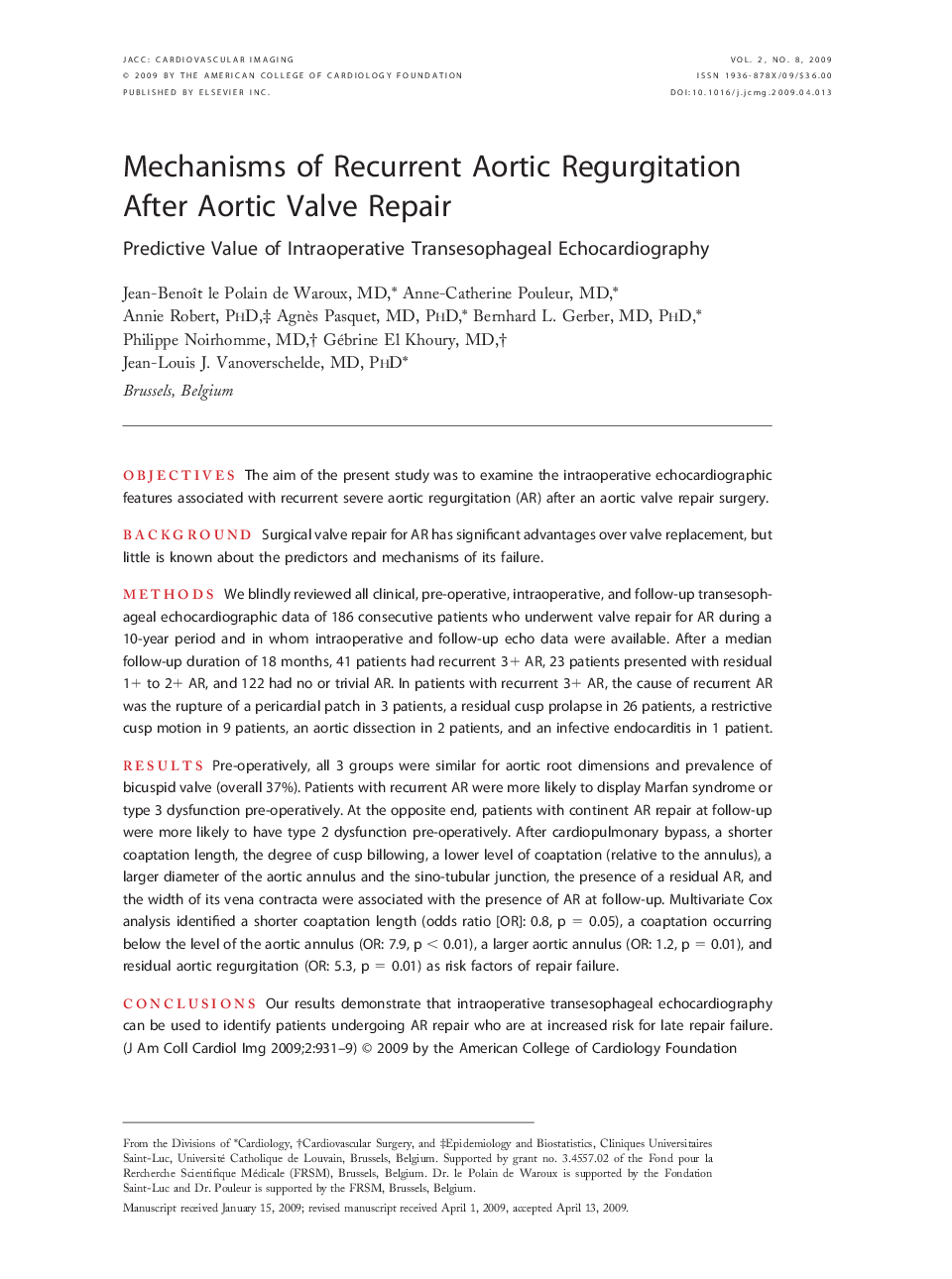| کد مقاله | کد نشریه | سال انتشار | مقاله انگلیسی | نسخه تمام متن |
|---|---|---|---|---|
| 2939244 | 1176979 | 2009 | 9 صفحه PDF | دانلود رایگان |

ObjectivesThe aim of the present study was to examine the intraoperative echocardiographic features associated with recurrent severe aortic regurgitation (AR) after an aortic valve repair surgery.BackgroundSurgical valve repair for AR has significant advantages over valve replacement, but little is known about the predictors and mechanisms of its failure.MethodsWe blindly reviewed all clinical, pre-operative, intraoperative, and follow-up transesophageal echocardiographic data of 186 consecutive patients who underwent valve repair for AR during a 10-year period and in whom intraoperative and follow-up echo data were available. After a median follow-up duration of 18 months, 41 patients had recurrent 3+ AR, 23 patients presented with residual 1+ to 2+ AR, and 122 had no or trivial AR. In patients with recurrent 3+ AR, the cause of recurrent AR was the rupture of a pericardial patch in 3 patients, a residual cusp prolapse in 26 patients, a restrictive cusp motion in 9 patients, an aortic dissection in 2 patients, and an infective endocarditis in 1 patient.ResultsPre-operatively, all 3 groups were similar for aortic root dimensions and prevalence of bicuspid valve (overall 37%). Patients with recurrent AR were more likely to display Marfan syndrome or type 3 dysfunction pre-operatively. At the opposite end, patients with continent AR repair at follow-up were more likely to have type 2 dysfunction pre-operatively. After cardiopulmonary bypass, a shorter coaptation length, the degree of cusp billowing, a lower level of coaptation (relative to the annulus), a larger diameter of the aortic annulus and the sino-tubular junction, the presence of a residual AR, and the width of its vena contracta were associated with the presence of AR at follow-up. Multivariate Cox analysis identified a shorter coaptation length (odds ratio [OR]: 0.8, p = 0.05), a coaptation occurring below the level of the aortic annulus (OR: 7.9, p < 0.01), a larger aortic annulus (OR: 1.2, p = 0.01), and residual aortic regurgitation (OR: 5.3, p = 0.01) as risk factors of repair failure.ConclusionsOur results demonstrate that intraoperative transesophageal echocardiography can be used to identify patients undergoing AR repair who are at increased risk for late repair failure.
Journal: JACC: Cardiovascular Imaging - Volume 2, Issue 8, August 2009, Pages 931–939